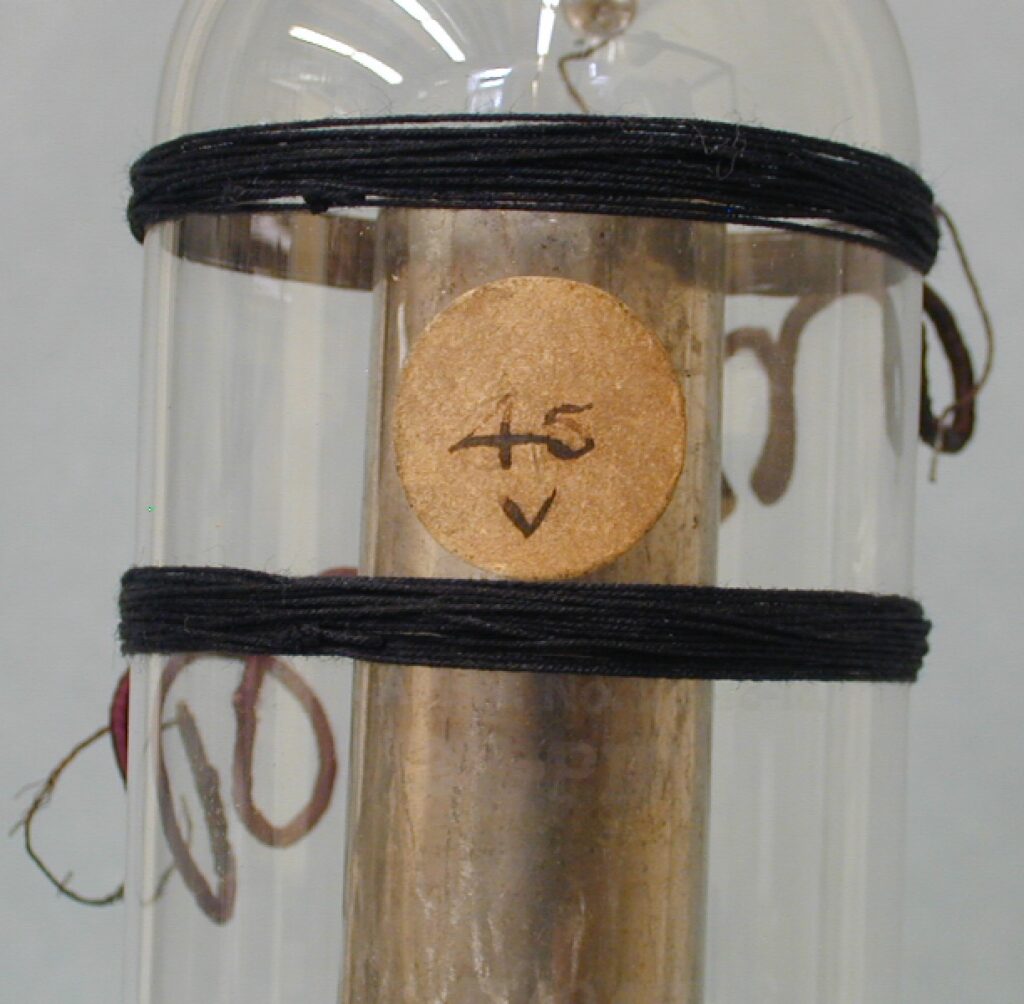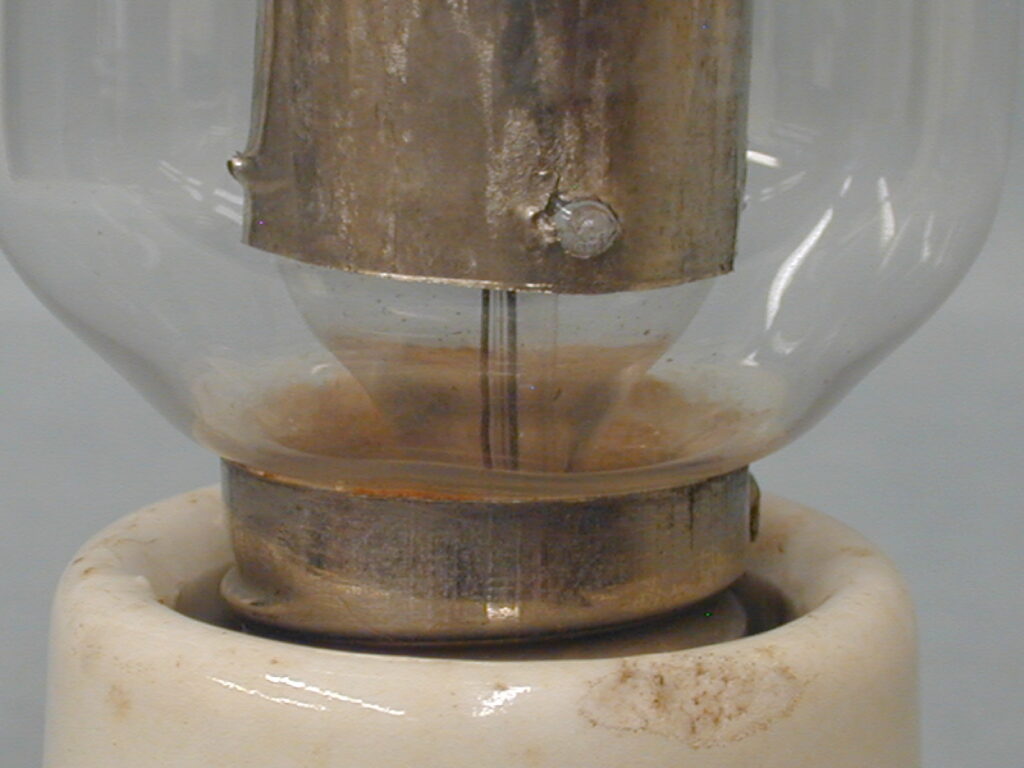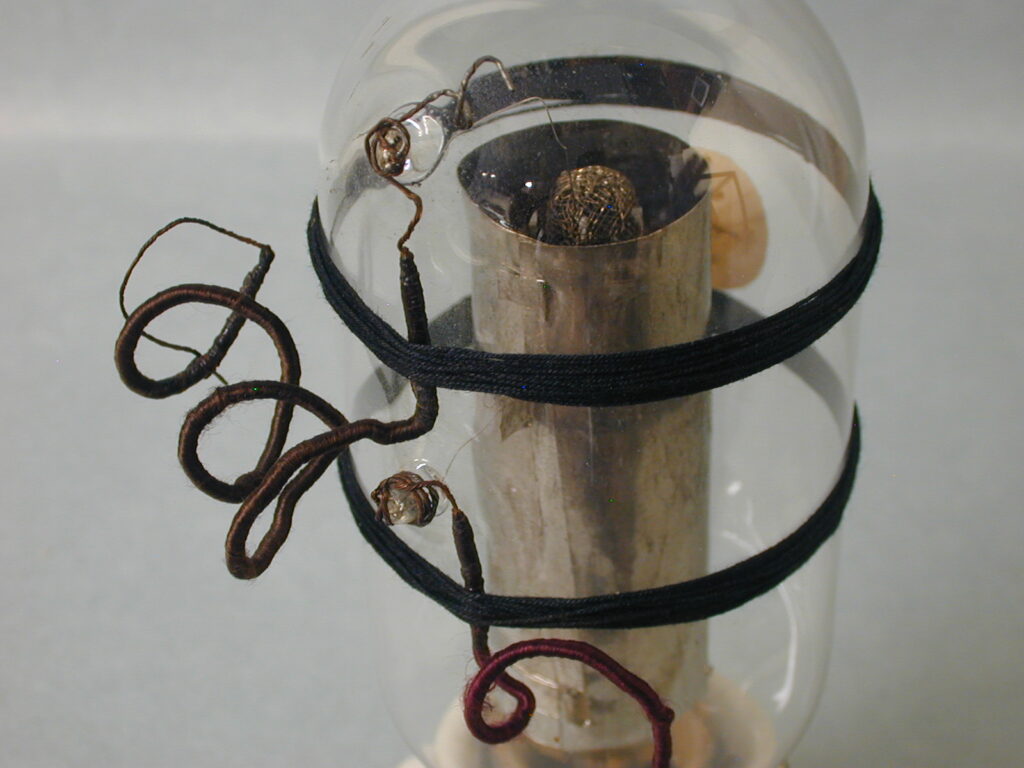
Much earnest tube development, around the world was taking place in the time period starting in 1900. In the UK, Fleming was working on the “Edison Effect” light bulb and saw its potential for use in communication. This became the Fleming Diode. At the same time, H. J. Round, working for the Marconi Wireless Telegraph Co, Ltd., was also working on the diode and dabbling in the triode. In Germany, Von Lieben and Reisz were working in this same area. In the US, DeForest was working on his own triode, the Audion, building on the work of others. For this article, we will concentrate on Marconi and his employee, Round.
In the UK, Captain H. J. Round, an electrical engineer, started working for the Marconi Wireless Telegraph Co., in 1902 and was the key man in this company. This relationship would go on to last several years and he would play a large role within the company. In 1911, Round designed his own version of the triode and this became known as the Round Valve and it was roughly based on the Von Lieben soft relay tube but it was unique in its design in several experimental Round valves. By 1913, Round had the finished gaseous by design valve, an early type of getter action, in hand with its unusual asbestos plug in the glass extension tube at the top open to the enclosed inner structure. The early Round valves depended on being gassy with the bulb being filled with, probably, nitrogen. In use, the gasses within the bulb when the voltage was turned off were then trapped in the asbestos. As the voltage was being applied again, the gas pressure within the bulb was low, reducing its sensitiveness. In order to rise the gas pressure back up, the asbestos would then be heated with a lighted match or in an electrical way to release the occluded gas trapped in the asbestos. The Round valve worked, perhaps in a similar way to the early DeForest audions. Operators of the gassy by default audions found that with careful application of voltages that the gases within the bulb aided in it becoming an extremely sensitive detector. Any comparison beyond that to the early DeForest spherical audions is difficult to see. The DeForest audion is spherical, small, and dainty with the filaments made of generally, tungsten, with a wrap of tantalum. The Round valves are made with a very large tubular bulb, a gigantic plate with oxide coated platinum filaments.
Specifically, the filament in this author’s type C Round valve are made of very tall oxide coated platinum wire, a very early use of this method. The grid is made of fine mesh nickel that surrounds the filament. The very tall and large plate is made of a solid nickel cylinder. One filament loop end is attached to the center of the nickel standard screw base and the other passes through a hole the upper nickel base and is soldered at that point like an early light bulb. Edison Swan made bayonet type bases as well. What appears to be a platinum wire is welded to the inside plate and exits a hole in the glass bulb and then welded to a very fine muti-stranded copper wire to make an attachment to voltage. The connection to the grid appears to be of similar metals and is connected in the same manner. How the seal is made as it passes through the glass is unknown as it does not seem to be a normal dumet wire as used in US tubes that would match the expansions of the glass and wire as they heat up? The nickel base is attached to the outer glass bulb with paste like that used on US tubes. The lower stem of the inner bulb starts small and becomes the same size as the inside diameter of the plate and fits up inside it. That larger upper glass stem has 3 glass points that protrude at the sides and pierce the nickel plate to hold it in place. The operating specs would be- filament voltage 2 to 2.5 volts, and 40- 80 volts on the plate and grid variable for each user. Etched on the bulb- pat. appn. no. 28413-t8., 2 v-pf50, no 4845. It also has a round paper tag that states 45V. The English porcelain base is of an unknown year but seems to match its possible use of a light bulb. The box, as collectors know, is as rare as the valve, perhaps more rare. Box is a Marconi standard early shipping container.
Round went on to develop several variations of the type soft C including the CA, CT, D, and N and transmitting valves. Round was the Marconi companies chief engineer from 1910-1930 with 117 patents to his name and many contributions to world-wide communication. One patent was in connection to the Round type C mesh grid as seen the pictures below.
See several pictures below of this author’s Round type C valve. Click on each picture below to see enlarged view.
Example below is in the Joe Gruber collection.








The Marconi short-distance wireless telephone transmitter and receiver above uses a Round type TN transmitting valve, in the gallows, and a Round type C valve, in the right rear, receiving tube.
See H. J. Round’s Autodyne receiver circuit here: C See also the Lieban hetrodyne circuit using a Round valve here: C2
Sources:
Saga of the Vacuum tube, Tyne, 1977
British radio valves, the vintage years: 1904-1925, Keith R. Thrower
The saga of Marconi Osram valve, Barry Vyse and George Jessop

Leave a Reply